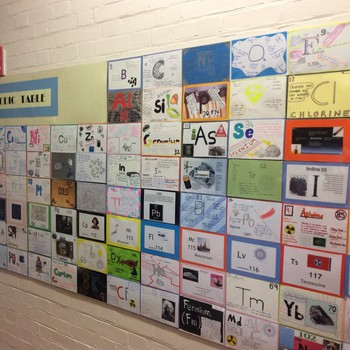If an element has atomic number 13 an atomic mass 27 how many electrons are there in each atom of the element?
2 Answers
13
Explanation:
Atomic number tells you the number of protons in an atom. Atoms are have no charge; they are electrically neutral. Therefore, the number of protons equals the number of electrons as protons have a +1 charge and electrons have a -1 charge.
CLEARLY, there are
Explanation:
The
And given
And so on the given data, I can specify the ISOTOPE as
This is a fundamental principle of chemistry, and periodicity, and so if there are any queries, objections, or items for clarification, ask and someone will help you.


